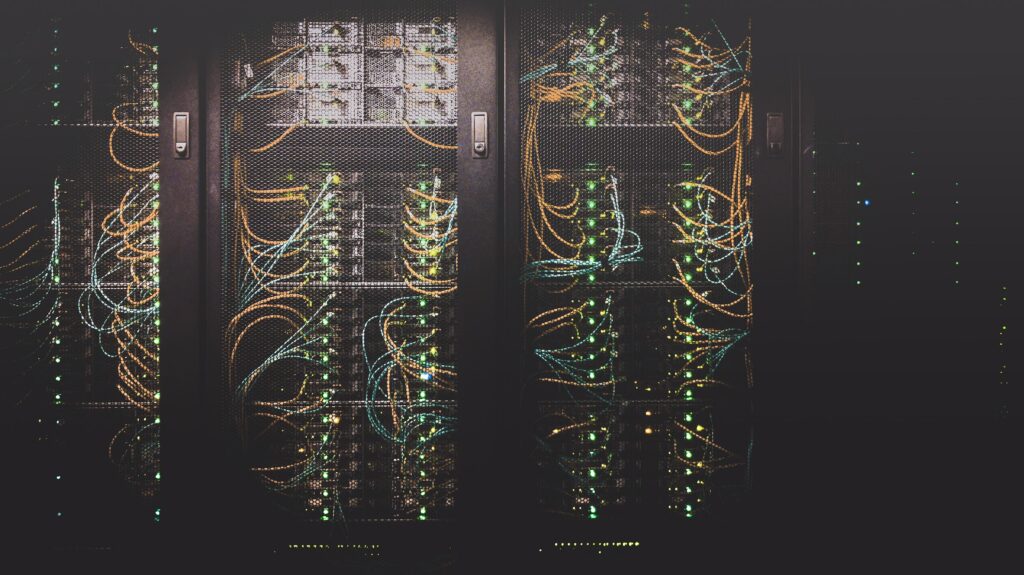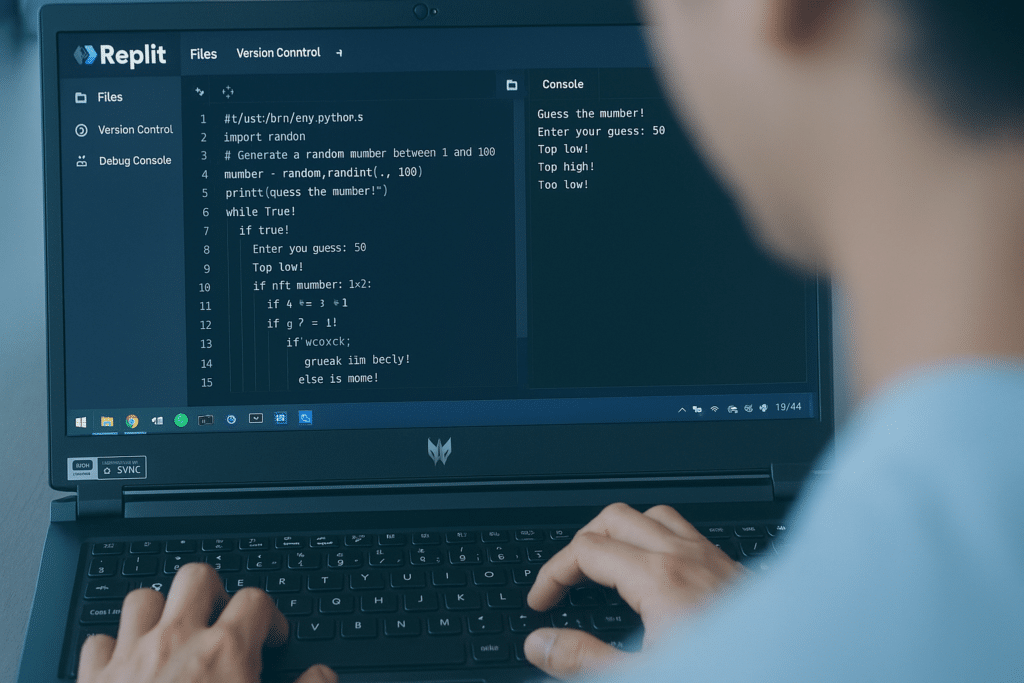Future-Proofing Work: A Task-Based Framework for AI Integration in Enterprises

Since the launch of ChatGPT just under two years ago, artificial intelligence (AI) has experienced its very own “Cambrian explosion”, with countless new tools flooding the market. This has transformed the way businesses operate, with 35% of global companies already using AI and another half of all businesses planning to incorporate it into their processes this year.1
The rapid adoption of AI represents a seismic shift in the way businesses operate, with the potential to redefine job roles altogether. In this article, I’ll explain how you can employ a task-based framework to manage this transition and ensure that employees adapt and thrive in an AI-enhanced environment.
Understanding the impact of AI on tasks and roles
To effectively utilise AI in a business environment, you need to understand where it should be deployed and where it shouldn’t. The goal is to augment human staff, enabling them to work smarter and faster.
This is where a task-based framework can help. By analysing and categorising work based on discrete tasks — rather than traditional, all-encompassing job descriptions — you can identify which tasks should be handled by AI and which should be handled by humans.
So which tasks are most susceptible to AI automation and augmentation? Here are some key examples:
- Administrative tasks: AI can automate repetitive, time-consuming tasks such as data entry and processing, sending invoices, generating reports, managing payroll, scheduling meetings, sending reminders, etc.
- Customer support: AI chatbots can handle basic customer queries, enabling businesses to scale their support function seamlessly. Generative AI tools can automate other customer communications, from emails and alerts to entire newsletters.
- Data analysis: AI can analyse large data sets in real time, enabling it to spot patterns, trends, anomalies, and other insights that can transform decision-making at every level of your business.
- Sales and marketing: AI can be deployed in a wide range of sales and marketing-related tasks, from automated lead scoring and customer segmentation to drafting marketing briefs, email copy, and even entire campaigns.
- Human resources: AI can help businesses provide personalised, real-time interactions at scale, including employee onboarding and training. It can also provide insights into employee performance, absence, and engagement.
These examples are just scratching the surface of the type of tasks that AI can automate. In reality, the optimal use of AI will vary from business to business. Generally speaking, however, it can be used to automate tasks that:
- Are repetitive, data-intensive, or rules-based
- Require minimal human judgement
- Can be standardised across various scenarios
Developing the task-based framework
Developing an effective task-based framework requires a methodical approach and collaboration between different business functions. Here, I’ll outline the key steps you need to take.
- Identify tasks
Start by breaking down the core tasks that comprise different job roles. This will help you understand and analyse your current work processes — and identify areas where AI could be used to improve the efficiency, accuracy, or quality of work.
- Evaluate and categorise tasks
Now you know the tasks involved in different roles and processes, you can organise them into the following three categories:
- Tasks that can be fully automated
- Tasks that can be augmented by AI
- Tasks that still require human skills
- Map skills and identify gaps
This final step involves aligning tasks with necessary skills and identifying any gaps in your current capabilities. To do this, you’ll need to assess the skills of your current employees and match them to the tasks you identified previously. If there are any gaps, you’ll need to develop training programs to close them, or recruit people who already have them.
Finally, with a clear picture of how AI will complement or replace humans in individual tasks, you can redefine human roles to incorporate these changes. Ultimately, this process will help your employees leverage their uniquely human skills and qualities, with AI helping them be more productive.
Both HR and IT departments will play a crucial role in this process, working together to map out tasks and skills effectively.
Implementing the framework
The success of your rules-based framework will depend on how you go about implementing it. In this section, I’ll look at three best practices you can follow to ensure a smooth and effective process.
- Prioritise clear communication
Any changes to job roles need to be approached with sensitivity, especially considering that employees may already be concerned about the future of their jobs and how automation may impact them.
To allay any fears, prioritise clear communication about any changes you will make to employee roles, how AI will be used, and how these decisions were made. Be sure to emphasise the fact that AI will be used to augment their skills, enabling them to work more effectively.
- Deliver targeted training
By automating repetitive tasks and augmenting others, the adoption of AI means employees will focus more on those human skills that differentiate them — such as problem-solving, critical thinking, strategising, and building relationships with customers.
To ensure that your staff are equipped for this shift, develop tailored training programs designed to upskill employees in these distinctly human skills, as well as those augmented by AI.
- Monitor and adjust
As we’ve seen in recent years, nothing stands still for long in the world of AI. With capabilities and use cases constantly expanding, you’ll need to periodically review the effectiveness of your framework and adjust accordingly.
Seek feedback from your staff on how current processes are working. Look for inefficiencies or bottlenecks where AI could be deployed, and ensure that employees receive ongoing training to help them maximise the opportunity that an AI-driven workplace provides.
Real-world examples and best practices
In this section, I’ll highlight some real-world examples of how enterprises have identified and analysed tasks, roles, and skills to seamlessly integrate AI into their processes.
Amazon — retraining staff to incorporate AI
As AI automates many of the day-to-day tasks employees are responsible for, Amazon has identified more technical, high-value roles that need filling to push the company forward, including software engineers, data scientists, and data security experts.
Instead of looking to fill these vacancies externally, Amazon is retraining roughly a third of its staff to fill those skills gaps at a cost of $700 million, including staff in its corporate offices, fulfilment centres, and high-street stores.
Deloitte — building a tech-savvy workforce
Another forward-thinking enterprise, Deloitte understands the importance of a tech-savvy workforce that’s capable of harnessing the opportunities that AI and automation bring. At the same time, it realised that the demand for tech-driven roles relating to AI and cybersecurity is outpacing supply.
To fix this issue, they introduced tech-fluency programs. The aim is to understand which tasks can be automated, which ones can’t, and how humans can be upskilled or retrained to fit the changing profile of their roles.
Panasonic North America — using AI to make HR more human
Panasonic North America has transformed its HR function, leveraging AI to handle tasks that are time-consuming and challenging for humans. For example, they use an AI platform to extract powerful insights from data that ultimately lead to a happier, more engaged, and more diverse workforce.
With HR staff freed from data-crunching and spreadsheets, they have more time to focus on implementing HR policies and connecting with people in a meaningful way.
Build a tailored task-based framework with expert help
The advance of AI is a huge opportunity — not only for businesses but also for employees. By handing over all those mundane, time-consuming tasks to AI, employees can engage in work that is more meaningful and valuable. A task-based framework is the best way to manage this shift, ensuring that your processes are as efficient as possible and that your staff are engaged and future-ready.
While I’ve covered the process for implementing a task-based framework in this article, in many cases it pays to work with an expert in AI and organisational change, who can help tailor the framework to your needs and guide you every step of the way.
So if you’re looking for a trusted partner to help you maximise the AI opportunity, look no further than Talk Think Do. Book a chat with us and we’ll be in touch.
Get access to our monthly
roundup of news and insights
You can unsubscribe from these communications at any time. For more information on how to unsubscribe, our privacy practices, and how we are committed to protecting and respecting your privacy, please review our Privacy Policy.
See our Latest Insights
Implementing RAG AI Search on On-Premise Files with our AI Search Accelerator
As demand for AI‑powered tools like Microsoft Copilot grows, many organisations are asking the same question: “How can we harness the power of generative AI without moving our sensitive data to the cloud?” In this guide, we’ll explain why Retrieval‑Augmented Generation (RAG) is so effective for on‑premise data and walk through a practical approach using…
Using AI to Strengthen ISO 27001 Compliance
Preparing for our ISO 27001:2022 recertification, and a transition from the 2013 standard, was no small task. As a custom software company handling sensitive client data, we hold ourselves to high standards around security and compliance. But this year, we approached the challenge differently. We built and deployed a custom AI Copilot agent to help…
Who Owns AI-Written Code? What CTOs, Developers, and Procurement Teams Need to Know
Generative AI is transforming how software is written. Tools like GitHub Copilot, Claude, Cursor, and OpenAI Codex are now capable of suggesting full functions, refactoring legacy modules, and scaffolding new features, in seconds. But as this machine-authored code finds its way into production, a critical question arises:Who owns it and who’s responsible if something goes…
Legacy systems are costing your business growth.
Get your free guide to adopting cloud software to drive business growth.




